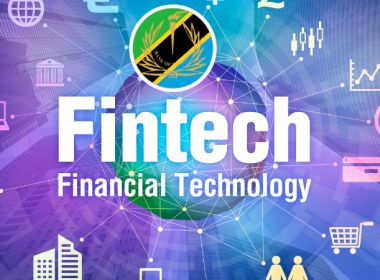Fintech
 Tanzania’s FinTech sector operates within a payments market currently valued at approximately USD 200 billion. Of this, USD 68 billion is attributed to consumer-led transactions, including mobile money payments, card payments, peer-to-peer transfers, and consumer-to-business or consumer-to-government transactions.
Tanzania’s FinTech sector operates within a payments market currently valued at approximately USD 200 billion. Of this, USD 68 billion is attributed to consumer-led transactions, including mobile money payments, card payments, peer-to-peer transfers, and consumer-to-business or consumer-to-government transactions.
The remaining USD 132 billion is driven by business-led activity, comprising domestic and cross-border B2B payments, business-to-consumer transfers, and government-related transactions.
Mobile money accounts for USD 62 billion in annual transaction volume. By mid-2017, over 20 million active mobile money wallets were registered in Tanzania, facilitating nearly 4 million peer-to-peer transactions each month.
Merchant payments are valued at USD 11 billion, with mobile money platforms handling approximately two-thirds of the volume. Cross-border remittances processed via mobile network operators amount to USD 0.7 billion.
Mobile financial services are used by approximately 60% of Tanzanian adults. These services include mobile payments, savings, microloans, and insurance.
FinTech platforms also support growing usage of POS systems, QR code-based payments, and app-based banking in both urban and rural areas.
Historical Development
Before the introduction of digital financial services, access to formal finance in Tanzania was limited. The 2006 FinScope survey found that over half of Tanzanian adults lacked access to formal financial institutions.
Banking services were concentrated in urban areas, and rural populations relied heavily on informal financial mechanisms due to barriers such as documentation requirements and minimum deposit thresholds.
The turning point came in 2008 with the launch of M-Pesa by Vodacom. The service enabled mobile phone-based money transfers and bill payments, reducing dependence on traditional banking infrastructure.
Competing mobile money platforms—Tigo Pesa and Airtel Money—were introduced between 2009 and 2010, expanding mobile financial services across the country.
By 2013, mobile money platforms began offering microloans and savings products. In 2014, Tanzania implemented full interoperability between mobile money networks, allowing customers to transact across different platforms. The COVID-19 pandemic further accelerated adoption, with increased use of remote financial services.
Pioneering companies such as Selcom Paytech and Maxcom Africa contributed to early DFS development. Selcom, established in 2001, operated over 25,000 POS terminals and acquired Access Microfinance Bank in 2023, renaming it Selcom Microfinance Bank. Maxcom, founded in 2010, partnered with Visa to launch MVISA and played a key role in prepaid utility services and SIM-based banking.
Sector Breakdown
FinTech in Tanzania includes mobile payments, digital lending, microsavings, microinsurance, blockchain applications, and AI-driven financial services.
Mobile money is the dominant segment, integrated with merchant payments, utility payments, and cross-border transfers.
On the consumer side, mobile money platforms dominate daily transactions. The ecosystem supports remittances, utility and merchant payments, microloans, and savings products accessible via basic mobile phones.
Two-thirds of merchant transactions use mobile money platforms. Financial services are increasingly delivered through mobile apps, especially in urban
On the business side, business-to-business and cross-border transactions form the majority of the market. B2B cross-border payments processed through banks amount to USD 58 billion. The Tanzania Instant Payment System (TIPS) and Tanzania Automated Clearing House (TACH) handle account-to-account transfers and cheque payments valued at USD 25 billion. Domestic B2B and business-to-consumer payments are valued at USD 49 billion.
Insurtech is an emerging sub-sector. Companies such as Jamii Africa offer microinsurance products via mobile platforms, covering health, life, and agriculture risks. Blockchain is being tested in remittance and supply chain use cases. Artificial intelligence and machine learning are applied in credit scoring, customer support, and fraud detection.
Dedicated efforts are underway to close gender gaps in financial inclusion. Laina Finance offers instant credit and Sharia-compliant financial products targeted at women and youth, with 35% of customers being female. Mipango Finance focuses on financial literacy and digital financial management via its app, led by a female founder. Women-led startups face a significant funding gap, receiving only 7.7% of startup capital. Programmes such as UNCDF’s PesaTech accelerator are designed to support female-led FinTechs.
Regulatory Framework
The Bank of Tanzania (BoT) has implemented a regulatory approach focused on enabling innovation while ensuring financial stability. In 2007, the BoT amended its founding Act to regulate non-bank financial service providers. In 2008, it issued the Guidelines for Electronic Payment Schemes, requiring mobile money providers to partner with licensed banks.
In 2015, the BoT introduced comprehensive guidelines for mobile payment services, including requirements for anti-money laundering (AML), customer due diligence (KYC), and consumer protection. These guidelines increased trust in digital financial services and supported further sector growth.
Interoperability between mobile money providers was implemented in 2014, making Tanzania the first country to achieve national-level interoperability. This reduced transaction costs and improved liquidity for agents.
In July 2024, the Government issued the FinTech (Regulatory Sandbox) Regulations under GN No. 540. The sandbox is administered by the BoT and applies to financial service providers and Tanzania-incorporated FinTech companies. It provides a controlled environment for testing financial innovations not yet fully regulated.
The application process includes submission of a business plan, risk assessments, and proof of funding. Testing must begin within two months of approval and conclude within twelve months. Participants are required to comply with the Personal Data Protection Act No. 11 of 2022 and to register intellectual property rights. The BoT reserves the right to approve, reject, or withdraw participation.
The BoT also maintains a National Financial Inclusion Database and the Financial Services Registry, which provides geospatial data on financial access points and informs policy planning and investment decisions.
Future Outlook
Tanzania’s FinTech sector is expected to grow through continued digitalization, expanded rural connectivity, and adoption of new technologies such as blockchain and artificial intelligence. These technologies are being explored for remittances, supply chain finance, credit scoring, and fraud detection.
Infrastructure remains a key constraint. In rural areas, limited access to electricity, smartphones, and internet services reduces adoption. Mobile penetration remains strong, but smartphone and data coverage gaps hinder use of app-based services. Connectivity challenges impact the ability of FinTech companies to process real-time transactions and maintain platform uptime. Cybersecurity remains a concern, with increased need for encryption, fraud prevention tools, and data protection standards.
Financial literacy is also a barrier. As of the 2023 FinScope survey, only 60% of Tanzanians understood basic financial concepts. Women and youth had lower levels of financial knowledge. Trust in digital services is still limited in some demographics due to fraud risks and lack of awareness.
Tanzania’s government has expressed interest in supporting open banking and further regulatory development. Dar es Salaam is positioned as a future financial and trade hub for East Africa. The sector is supported by public-private partnerships, including development initiatives such as the Digital4Tanzania (D4T-TIDE) programme and the UNCDF-backed FinTech ecosystem.
The regulatory environment is expected to continue evolving, with emphasis on risk-based oversight, innovation testing, consumer protection, and financial inclusion.
Last Updated: 27th June 2025







